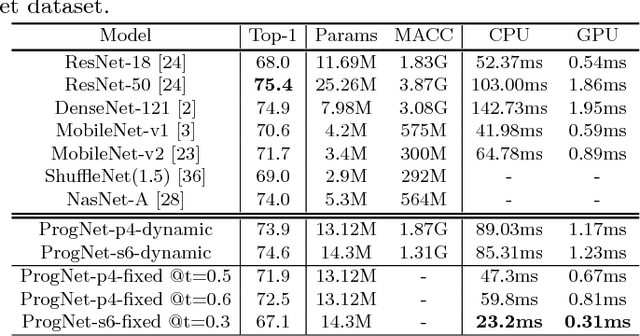Zhiqun Zhao
Structure-Preserving Progressive Low-rank Image Completion for Defending Adversarial Attacks
Mar 04, 2021



Abstract:Deep neural networks recognize objects by analyzing local image details and summarizing their information along the inference layers to derive the final decision. Because of this, they are prone to adversarial attacks. Small sophisticated noise in the input images can accumulate along the network inference path and produce wrong decisions at the network output. On the other hand, human eyes recognize objects based on their global structure and semantic cues, instead of local image textures. Because of this, human eyes can still clearly recognize objects from images which have been heavily damaged by adversarial attacks. This leads to a very interesting approach for defending deep neural networks against adversarial attacks. In this work, we propose to develop a structure-preserving progressive low-rank image completion (SPLIC) method to remove unneeded texture details from the input images and shift the bias of deep neural networks towards global object structures and semantic cues. We formulate the problem into a low-rank matrix completion problem with progressively smoothed rank functions to avoid local minimums during the optimization process. Our experimental results demonstrate that the proposed method is able to successfully remove the insignificant local image details while preserving important global object structures. On black-box, gray-box, and white-box attacks, our method outperforms existing defense methods (by up to 12.6%) and significantly improves the adversarial robustness of the network.
Reciprocal Learning Networks for Human Trajectory Prediction
Apr 09, 2020



Abstract:We observe that the human trajectory is not only forward predictable, but also backward predictable. Both forward and backward trajectories follow the same social norms and obey the same physical constraints with the only difference in their time directions. Based on this unique property, we develop a new approach, called reciprocal learning, for human trajectory prediction. Two networks, forward and backward prediction networks, are tightly coupled, satisfying the reciprocal constraint, which allows them to be jointly learned. Based on this constraint, we borrow the concept of adversarial attacks of deep neural networks, which iteratively modifies the input of the network to match the given or forced network output, and develop a new method for network prediction, called reciprocal attack for matched prediction. It further improves the prediction accuracy. Our experimental results on benchmark datasets demonstrate that our new method outperforms the state-of-the-art methods for human trajectory prediction.
Snowball: Iterative Model Evolution and Confident Sample Discovery for Semi-Supervised Learning on Very Small Labeled Datasets
Sep 04, 2019



Abstract:In this work, we develop a joint sample discovery and iterative model evolution method for semi-supervised learning on very small labeled training sets. We propose a master-teacher-student model framework to provide multi-layer guidance during the model evolution process with multiple iterations and generations. The teacher model is constructed by performing an exponential moving average of the student models obtained from past training steps. The master network combines the knowledge of the student and teacher models with additional access to newly discovered samples. The master and teacher models are then used to guide the training of the student network by enforcing the consistence between their predictions of unlabeled samples and evolve all models when more and more samples are discovered. Our extensive experiments demonstrate that the discovering confident samples from the unlabeled dataset, once coupled with the above master-teacher-student network evolution, can significantly improve the overall semi-supervised learning performance. For example, on the CIFAR-10 dataset, with a very small set of 250 labeled samples, our method achieves an error rate of 11.81 %, more than 38 % lower than the state-of-the-art method Mean-Teacher (49.91 %).
Progressive Neural Networks for Image Classification
Apr 25, 2018



Abstract:The inference structures and computational complexity of existing deep neural networks, once trained, are fixed and remain the same for all test images. However, in practice, it is highly desirable to establish a progressive structure for deep neural networks which is able to adapt its inference process and complexity for images with different visual recognition complexity. In this work, we develop a multi-stage progressive structure with integrated confidence analysis and decision policy learning for deep neural networks. This new framework consists of a set of network units to be activated in a sequential manner with progressively increased complexity and visual recognition power. Our extensive experimental results on the CIFAR-10 and ImageNet datasets demonstrate that the proposed progressive deep neural network is able to obtain more than 10 fold complexity scalability while achieving the state-of-the-art performance using a single network model satisfying different complexity-accuracy requirements.
 Add to Chrome
Add to Chrome Add to Firefox
Add to Firefox Add to Edge
Add to Edge